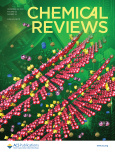
K. Jayaramulu, S. Mukherjee, D. M. Morales, D. P. Dubal, A. K. Nanjundan, A. Schneemann, J. Masa, S. Kment, W. Schuhmann, M. Otyepka, R. Zbořil and R. A. Fischer, "Graphene-Based Metal–Organic Framework Hybrids for Applications in Catalysis, Environmental, and Energy Technologies," CHEMICAL REVIEWS, vol. 122, iss. 24, pp. 17241-17338, 2022.
DOI: 10.1021/acs.chemrev.2c00270, IF = 72.087
Abstract: Current energy and environmental challenges demand the development and design of multifunctional porous materials with tunable properties for catalysis, water purification, and energy conversion and storage. Because of their amenability to de novo reticular chemistry, metal–organic frameworks (MOFs) have become key materials in this area. However, their usefulness is often limited by low chemical stability, conductivity and inappropriate pore sizes. Conductive two-dimensional (2D) materials with robust structural skeletons and/or functionalized surfaces can form stabilizing interactions with MOF components, enabling the fabrication of MOF nanocomposites with tunable pore characteristics. Graphene and its functional derivatives are the largest class of 2D materials and possess remarkable compositional versatility, structural diversity, and controllable surface chemistry. Here, we critically review current knowledge concerning the growth, structure, and properties of graphene derivatives, MOFs, and their graphene@MOF composites as well as the associated structure–property–performance relationships. Synthetic strategies for preparing graphene@MOF composites and tuning their properties are also comprehensively reviewed together with their applications in gas storage/separation, water purification, catalysis (organo-, electro-, and photocatalysis), and electrochemical energy storage and conversion. Current challenges in the development of graphene@MOF hybrids and their practical applications are addressed, revealing areas for future investigation. We hope that this review will inspire further exploration of new graphene@MOF hybrids for energy, electronic, biomedical, and photocatalysis applications as well as studies on previously unreported properties of known hybrids to reveal potential “diamonds in the rough”.

L. Mascaretti, A. Schirato, T. Montini, A. Alabastri, A. Naldoni and P. Fornasiero, "Challenges in temperature measurements in gas-phase photothermal catalysis," JOULE, vol. 6, iss. 8, pp. 1727-1732, 2022.
DOI: 10.1016/j.joule.2022.06.019, IF = 46.048
Abstract:
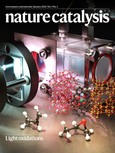
V. G. Chandrashekhar, T. Senthamarai, R. G. Kadam, O. Malina, J. Kašlík, R. Zbořil, M. B. Gawande, R. V. Jagadeesh and M. Beller, "Silica-supported Fe/Fe–O nanoparticles for the catalytic hydrogenation of nitriles to amines in the presence of aluminium additives," NATURE CATALYSIS, vol. 5, iss. 1, pp. 20-29, 2022.
DOI: 10.1038/s41929-021-00722-x, IF = 41.813
Abstract: The hydrogenation of nitriles to amines represents an important and frequently used industrial process due to the broad applicability of the resulting products in chemistry and life sciences. Despite the existing portfolio of catalysts reported for the hydrogenation of nitriles, the development of iron-based heterogeneous catalysts for this process is still a challenge. Here, we show that the impregnation and pyrolysis of iron(II) acetate on commercial silica produces a reusable Fe/Fe–O@SiO2 catalyst with a well-defined structure comprising the fayalite phase at the Si–Fe interface and α-Fe nanoparticles, covered by an ultrathin amorphous iron(III) oxide layer, growing from the silica matrix. These Fe/Fe–O core–shell nanoparticles, in the presence of catalytic amounts of aluminium additives, promote the hydrogenation of all kinds of nitriles, including structurally challenging and functionally diverse aromatic, heterocyclic, aliphatic and fatty nitriles, to produce primary amines under scalable and industrially viable conditions.
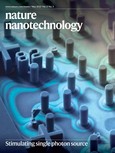
A. Cheruvathoor Poulose, G. Zoppellaro, I. Konidakis, E. Serpetzoglou, E. Stratakis, O. Tomanec, M. Beller, A. Bakandritsos and R. Zbořil, "Fast and selective reduction of nitroarenes under visible light with an earth-abundant plasmonic photocatalyst," NATURE NANOTECHNOLOGY, vol. 17, iss. 5, pp. 485-492, 2022.
DOI: 10.1038/s41565-022-01087-3, IF = 39.213
Abstract: Reduction of nitroaromatics to the corresponding amines is a key process in the fine and bulk chemicals industry to produce polymers, pharmaceuticals, agrochemicals and dyes. However, their effective and selective reduction requires high temperatures and pressurized hydrogen and involves noble metal-based catalysts. Here we report on an earth-abundant, plasmonic nano-photocatalyst, with an excellent reaction rate towards the selective hydrogenation of nitroaromatics. With solar light as the only energy input, the chalcopyrite catalyst operates through the combined action of hot holes and photothermal effects. Ultrafast laser transient absorption and light-induced electron paramagnetic resonance spectroscopies have unveiled the energy matching of the hot holes in the valence band of the catalyst with the frontier orbitals of the hydrogen and electron donor, via a transient coordination intermediate. Consequently, the reusable and sustainable copper-iron-sulfide (CuFeS2) catalyst delivers previously unattainable turnover frequencies, even in large-scale reactions, while the cost-normalized production rate stands an order of magnitude above the state of the art.
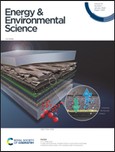
V. Šedajová, A. Bakandritsos, P. Błoński, M. Medveď, R. Langer, D. Zaoralová, J. Ugolotti, J. Dzíbelová, P. Jakubec, V. Kupka and M. Otyepka, "Nitrogen doped graphene with diamond-like bonds achieves unprecedented energy density at high power in a symmetric sustainable supercapacitor," ENERGY & ENVIRONMENTAL SCIENCE, vol. 15, iss. 2, pp. 740-748, 2022.
DOI: 10.1039/d1ee02234b, IF = 38.532
Abstract: Supercapacitors have attracted great interest because of their fast, reversible operation and sustainability. However, their energy densities remain lower than those of batteries. In the last decade, supercapacitors with an energy content of ∼110 W h L−1 at a power of ∼1 kW L−1 were developed by leveraging the open framework structure of graphene-related architectures. Here, we report that the reaction of fluorographene with azide anions enables the preparation of a material combining graphene-type sp2 layers with tetrahedral carbon–carbon bonds and nitrogen (pyridinic and pyrrolic) superdoping (16%). Theoretical investigations showed that the C–C bonds develop between carbon-centered radicals, which emerge in the vicinity of the nitrogen dopants. This material, with diamond-like bonds and an ultra-high mass density of 2.8 g cm−3, is an excellent host for the ions, delivering unprecedented energy densities of 200 W h L−1 at a power of 2.6 kW L−1 and 143 W h L−1 at 52 kW L−1. These findings open a route to materials whose properties may enable a transformative improvement in the performance of supercapacitor components.
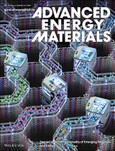
I. Obraztsov, A. Bakandritsos, V. Šedajová, R. Langer, P. Jakubec, G. Zoppellaro, M. Pykal, V. Presser, M. Otyepka and R. Zbořil, "Graphene Acid for Lithium‐Ion Batteries—Carboxylation Boosts Storage Capacity in Graphene," ADVANCED ENERGY MATERIALS, vol. 12, iss. 5, pp. 2103010, 2022.
DOI: 10.1002/aenm.202103010, IF = 29.368
Abstract: Environmentally sustainable, low-cost, flexible, and lightweight energy storage technologies require advancement in materials design in order to obtain more efficient organic metal-ion batteries. Synthetically tailored organic molecules, which react reversibly with lithium, may address the need for cost-effective and eco-friendly anodes used for organic/lithium battery technologies. Among them, carboxylic group-bearing molecules act as high-energy content anodes. Although organic molecules offer rich chemistry, allowing a high content of carboxyl groups to be installed on aromatic rings, they suffer from low conductivity and leakage to the electrolytes, which restricts their actual capacity, the charging/discharging rate, and eventually their application potential. Here, a densely carboxylated but conducting graphene derivative (graphene acid (GA)) is designed to circumvent these critical limitations, enabling effective operation without compromising the mechanical or chemical stability of the electrode. Experiments including operando Raman measurements and theoretical calculations reveal the excellent charge transport, redox activity, and lithium intercalation properties of the GA anode at the single-layer level, outperforming all reported organic anodes, including commercial monolayer graphene and graphene nanoplatelets. The practical capacity and rate capability of 800 mAh g−1 at 0.05 A g−1 and 174 mAh g−1 at 2.0 A g−1 demonstrate the true potential of GA anodes in advanced lithium-ion batteries.
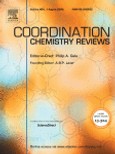
R. K. Gupta, M. Riaz, M. Ashafaq, Z. Gao, R. S. Varma, D. Li, P. Cui, C. Tung and D. Sun, "Adenine-incorporated metal–organic frameworks," COORDINATION CHEMISTRY REVIEWS, vol. 464, pp. 214558, 2022.
DOI: 10.1016/j.ccr.2022.214558, IF = 24.833
Abstract: Metal-organic frameworks (MOFs) endowed with unique structural features, namely permanent porosity, high surface area, tunable pore size, and potential applications in diverse domains, have garnered immense attention in recent decades. The availability of large numbers of organic linkers, metal nodes, and multiple synthetic tactics has broadened the scope of MOF research wherein the judicial selection of building blocks, and especially the organic linker is critical for the task-specific MOF design. The adenine nucleobase is an ideal choice among the broadly available organic linkers because of its small size, being nitrogen-riched and non-toxic, and its ready availability comprising multiple Lewis basic coordination sites and modes. In addition, adenine with its amino group (–NH2) can network through non-covalent interfaces (host and guest) rather than covalent interactions, i.e., hydrogen bonding via Watson-Crick (N1, N6H) and Hoogsteen (N7, N6H) face contact, thus making ensued adenine-based MOF materials more appealing. Herein, we appraise the general introduction of syntheses and design strategies, the structural influence of adenine incorporation to the ensued attributes of MOFs, and their applications in diverse research fields such as gas storage (selective adsorption of CO2), separation, luminescence, drug delivery, catalysis, and sensing.
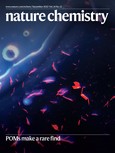
J. Lawrence, A. Berdonces-Layunta, S. Edalatmanesh, J. Castro-Esteban, T. Wang, A. Jimenez-Martin, B. de la Torre, R. Castrillo-Bodero, P. Angulo-Portugal, M. S. G. Mohammed, A. Matěj, M. Vilas-Varela, F. Schiller, M. Corso, P. Jelinek, D. Peña and D. G. de Oteyza, "Circumventing the stability problems of graphene nanoribbon zigzag edges," NATURE CHEMISTRY, vol. 14, iss. 12, pp. 1451-1458, 2022.
DOI: 10.1038/s41557-022-01042-8, IF = 24.427
Abstract: Carbon dots that exhibit near-infrared fluorescence (NIR CDs) are considered emerging nanomaterials for advanced biomedical applications with low toxicity and superior photostability and targeting compared to currently used photoluminescence agents. Despite progress in the synthesis of NIR CDs, there remains a key obstacle to using them as an in vivo theranostic agent. This work demonstrates that the newly developed sulfur and nitrogen codoped NIR CDs are highly efficient in photothermal therapy (PTT) in mouse models (conversion efficiency of 59%) and can be readily visualized by photoluminescence and photoacoustic imaging. The real theranostic potential of NIR CDs is enhanced by their unique biodistribution and targeting. Contrary to all other nanomaterials that have been tested in biomedicine, they are excreted through the body’s renal filtration system. Moreover, after intravenous injection, NIR CDs are accumulated in tumor tissue via passive targeting, without any active species such as antibodies. Due to their accumulation in tumor tissue without the need for intratumor injection, high photothermal conversion, excellent optical and photoacoustic imaging performance, and renal excretion, the developed CDs are suitable for transfer to clinical biomedical practice.
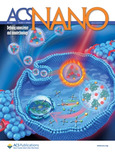
Y. Li, P. Zhang, W. Tang, K. J. McHugh, S. V. Kershaw, M. Jiao, X. Huang, S. Kalytchuk, C. F. Perkinson, S. Yue, Y. Qiao, L. Zhu, L. Jing, M. Gao and B. Han, "Bright, Magnetic NIR-II Quantum Dot Probe for Sensitive Dual-Modality Imaging and Intensive Combination Therapy of Cancer," ACS NANO, vol. 16, iss. 5, pp. 8076-8094, 2022.
DOI: 10.1021/acsnano.2c01153, IF = 18.027
Abstract: Improving the effectiveness of cancer therapy will require tools that enable more specific cancer targeting and improved tumor visualization. Theranostics have the potential for improving cancer care because of their ability to serve as both diagnostics and therapeutics; however, their diagnostic potential is often limited by tissue-associated light absorption and scattering. Herein, we develop CuInSe2@ZnS:Mn quantum dots (QDs) with intrinsic multifunctionality that both enable the accurate localization of small metastases and act as potent tumor ablation agents. By leveraging the growth kinetics of a ZnS shell on a biocompatible CuInSe2 core, Mn doping, and folic acid functionalization, we produce biocompatible QDs with high near-infrared (NIR)-II fluorescence efficiency up to 31.2%, high contrast on magnetic resonance imaging (MRI), and preferential distribution in 4T1 breast cancer tumors. MRI-enabled contrast of these nanoprobes is sufficient to timely identify small metastases in the lungs, which is critically important for preventing cancer spreading and recurrence. Further, exciting tumor-resident QDs with NIR light produces both fluorescence for tumor visualization through radiative recombination pathways as well as heat and radicals through nonradiative recombination pathways that kill cancer cells and initiate an anticancer immune response, which eliminates tumor and prevents tumor regrowth in 80% of mice.
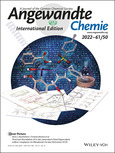
J. I. Mendieta‐Moreno, B. Mallada, B. de la Torre, T. Cadart, M. Kotora and P. Jelínek, "Unusual Scaffold Rearrangement in Polyaromatic Hydrocarbons Driven by Concerted Action of Single Gold Atoms on a Gold Surface," ANGEWANDTE CHEMIE INTERNATIONAL EDITION, vol. 61, iss. 50, pp. e202208010, 2022.
DOI: 10.1002/anie.202208010, IF = 16.823
Abstract: Chemical transformation of polyaromatic hydrocarbon (PAH) molecules following different reaction strategies has always been the focus of organic synthesis. In this work, we report the synthesis of a PAH molecule, formation of which consists of an unusual C−C bond cleavage accompanied by a complex π-conjugated molecular scaffold rearrangement. We demonstrate that the complex chemical transformation is steered by concerted motion of individual Au0 gold atoms on a supporting Au(111) surface. This observation underpins the importance of single-atom catalysis mediated by adatoms in on-surface synthesis as well as catalytic activity of single Au0 atoms facilitating cleavage of covalent carbon bonds.
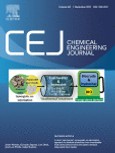
Z. Zhou, J. Zhang, S. Mukherjee, S. Hou, R. Khare, M. Döblinger, O. Tomanec, M. Otyepka, M. Koch, P. Gao, L. Zhou, W. Li and R. A. Fischer, "Porphyrinic MOF derived Single-atom electrocatalyst enables methanol oxidation," CHEMICAL ENGINEERING JOURNAL, vol. 449, pp. 137888, 2022.
DOI: 10.1016/j.cej.2022.137888, IF = 16.744
Abstract: Electrochemical methanol oxidation reaction (MOR) serves as a key route for renewable energy technologies. However, unmet challenges remain in the preparation of low-cost, efficient and robust electrocatalysts for MOR. Herein, a porphyrinic metal–organic framework (MOF) with spatially isolated Ni centres is prepared. Upon pyrolysis, this affords a single-atom Ni implanted nitrogen-doped porous carbon (20% Ni-N-C). Integrating abundant and accessible single-atom Ni sites, hierarchical porosity, excellent conductivity with stable Ni-N4 moieties all in one, the derived ultra-stable 20% Ni-N-C exhibits high MOR activity, impressive durability and CO tolerance, thereby outperforming state-of-the-art nonprecious metal based electrocatalysts. Computational insights reveal a low energy barrier of 1.19 eV for the rate-determining step, in agreement with the experimental observations of superior MOR activity. As the first foray into improving MOR efficiency with nonprecious metal based single-atom electrocatalysts, the yet-unrealized potential for MOFs and related modular hybrids is demonstrated.

C. R. Simmons, T. MacCulloch, M. Krepl, M. Matthies, A. Buchberger, I. Crawford, J. Šponer, P. Šulc, N. Stephanopoulos and H. Yan, "The influence of Holliday junction sequence and dynamics on DNA crystal self-assembly," NATURE COMMUNICATIONS, vol. 13, iss. 1, article no. 3112, 2022.
DOI: 10.1038/s41467-022-30779-6, IF = 14.919
Abstract: The programmable synthesis of rationally engineered crystal architectures for the precise arrangement of molecular species is a foundational goal in nanotechnology, and DNA has become one of the most prominent molecules for the construction of these materials. In particular, branched DNA junctions have been used as the central building block for the assembly of 3D lattices. Here, crystallography is used to probe the effect of all 36 immobile Holliday junction sequences on self-assembling DNA crystals. Contrary to the established paradigm in the field, most junctions yield crystals, with some enhancing the resolution or resulting in unique crystal symmetries. Unexpectedly, even the sequence adjacent to the junction has a significant effect on the crystal assemblies. Six of the immobile junction sequences are completely resistant to crystallization and thus deemed “fatal,” and molecular dynamics simulations reveal that these junctions invariably lack two discrete ion binding sites that are pivotal for crystal formation. The structures and dynamics detailed here could be used to inform future designs of both crystals and DNA nanostructures more broadly, and have potential implications for the molecular engineering of applied nanoelectronics, nanophotonics, and catalysis within the crystalline context.

M. Paloncýová, M. Pykal, P. Kührová, P. Banáš, J. Šponer and M. Otyepka, "Computer Aided Development of Nucleic Acid Applications in Nanotechnologies," SMALL, vol. 18, iss. 49, pp. 2204408, 2022.
DOI: 10.1002/smll.202204408, IF = 15.153
Abstract: Utilization of nucleic acids (NAs) in nanotechnologies and nanotechnology-related applications is a growing field with broad application potential, ranging from biosensing up to targeted cell delivery. Computer simulations are useful techniques that can aid design and speed up development in this field. This review focuses on computer simulations of hybrid nanomaterials composed of NAs and other components. Current state-of-the-art molecular dynamics simulations, empirical force fields (FFs), and coarse-grained approaches for the description of deoxyribonucleic acid and ribonucleic acid are critically discussed. Challenges in combining biomacromolecular and nanomaterial FFs are emphasized. Recent applications of simulations for modeling NAs and their interactions with nano- and biomaterials are overviewed in the fields of sensing applications, targeted delivery, and NA templated materials. Future perspectives of development are also highlighted.
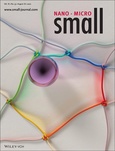
D. Panáček, L. Zdražil, M. Langer, V. Šedajová, Z. Baďura, G. Zoppellaro, Q. Yang, E. P. Nguyen, R. Álvarez‐Diduk, V. Hrubý, J. Kolařík, N. Chalmpes, A. B. Bourlinos, R. Zbořil, A. Merkoçi, A. Bakandritsos and M. Otyepka, "Graphene Nanobeacons with High‐Affinity Pockets for Combined, Selective, and Effective Decontamination and Reagentless Detection of Heavy Metals," SMALL, vol. 18, iss. 33, pp. 2201003, 2022.
DOI: 10.1002/smll.202201003, IF = 15.153
Abstract: Access to clean water for drinking, sanitation, and irrigation is a major sustainable development goal of the United Nations. Thus, technologies for cleaning water and quality-monitoring must become widely accessible and of low-cost, while being effective, selective, sustainable, and eco-friendly. To meet this challenge, hetero-bifunctional nanographene fluorescent beacons with high-affinity pockets for heavy metals are developed, offering top-rated and selective adsorption for cadmium and lead, reaching 870 and 450 mg g-1, respectively. The heterobifunctional and multidentate pockets also operate as selective gates for fluorescence signal regulation with sub-nanomolar sensitivity (0.1 and 0.2 nm for Pb2+ and Cd2+, respectively), due to binding affinities as low as those of antigen-antibody interactions. Importantly, the acid-proof nanographenes can be fully regenerated and reused. Their broad visible-light absorption offers an additional mode for water-quality monitoring based on ultra-low cost and user-friendly reagentless paper detection with the naked-eye at a limit of detection of 1 and 10 ppb for Pb2+ and Cd2+ ions, respectively. This work shows that photoactive nanomaterials, densely-functionalized with strong, yet selective ligands for targeted contaminants, can successfully combine features such as excellent adsorption, reusability, and sensing capabilities, in a way to extend the material's applicability, its life-cycle, and value-for-money.
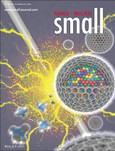
D. D. Chronopoulos, H. Saini, I. Tantis, R. Zbořil, K. Jayaramulu and M. Otyepka, "Carbon Nanotube Based Metal–Organic Framework Hybrids From Fundamentals Toward Applications," SMALL, vol. 18, iss. 4, pp. 2104628, 2022.
DOI: 10.1002/smll.202104628, IF = 15.153
Abstract: Metal–organic frameworks (MOFs) materials constructed by the coordination chemistry of metal ions and organic ligands are important members of the crystalline materials family. Owing to their exceptional properties, for example, high porosity, tunable pore size, and large surface area, MOFs have been applied in several fields such as gas or liquid adsorbents, sensors, batteries, and supercapacitors. However, poor conductivity and low stability hamper their potential applications in several attractive fields such as energy and gas storage. The integration of MOFs with carbon nanotubes (CNTs), a well-established carbon allotrope that exhibits high conductivity and stability, has been proposed as an efficient strategy to overcome such limitations. By combining the advantages of MOFs and CNTs, a wide variety of composites can be prepared with properties superior to their parent materials. This review provides a comprehensive summary of the preparation of CNT@MOF composites and focuses on their recent applications in several important fields, such as water purification, gas storage and separation, sensing, electrocatalysis, and energy storage (supercapacitors and batteries). Future challenges and prospects for CNT@MOF composites are also discussed.
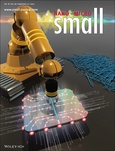
R. G. Kadam, T. Ye, D. Zaoralová, M. Medveď, P. Sharma, Y. Lu, G. Zoppellaro, O. Tomanec, M. Otyepka, R. Zbořil, H. Hosono and M. B. Gawande, "Intermetallic Copper‐Based Electride Catalyst with High Activity for C–H Oxidation and Cycloaddition of CO
2
into Epoxides," SMALL, vol. 18, iss. 38, pp. 2201712, 2022.
DOI: 10.1002/smll.202201712, IF = 15.153
Abstract: Inorganic electrides have been proved to be efficient hosts for incorporating transition metals, which can effectively act as active sites giving an outstanding catalytic performance. Here, it is demonstrated that a reusable and recyclable (for more than 7 times) copper-based intermetallic electride catalyst (LaCu0.67Si1.33), in which the Cu sites activated by anionic electrons with low-work function are uniformly dispersed in the lattice framework, shows vast potential for the selective C–H oxidation of industrially important hydrocarbons and cycloaddition of CO2 with epoxide. This leads to the production of value-added cyclic carbonates under mild reaction conditions. Importantly, the LaCu0.67Si1.33 catalyst enables much higher turnover frequencies for the C–H oxidation (up to 25 276 h–1) and cycloaddition of CO2 into epoxide (up to 800 000 h–1), thus exceeding most nonnoble as well as noble metal catalysts. Density functional theory investigations have revealed that the LaCu0.67Si1.33 catalyst is involved in the conversion of N-hydroxyphthalimide (NHPI) into the phthalimido-N-oxyl (PINO), which then triggers selective abstraction of an H atom from ethylbenzene for the generation of a radical susceptible to further oxygenation in the presence of O2.
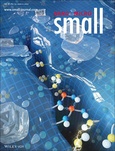
M. Ussia, M. Urso, S. Kment, T. Fialova, K. Klima, K. Dolezelikova and M. Pumera, "Light‐Propelled Nanorobots for Facial Titanium Implants Biofilms Removal," SMALL, vol. 18, iss. 22, pp. 2200708, 2022.
DOI: 10.1002/smll.202200708, IF = 15.153
Abstract: Titanium miniplates are biocompatible materials used in modern oral and maxillofacial surgery to treat facial bone fractures. However, plate removal is often required due to implant complications. Among them, a biofilm formation on an infected miniplate is associated with severe inflammation, which frequently results in implant failure. In light of this, new strategies to control or treat oral bacterial biofilm are of high interest. Herein, the authors exploit the ability of nanorobots against multispecies bacterial biofilm grown onto facial commercial titanium miniplate implants to simulate pathogenic conditions of the oral microenvironment. The strategy is based on the use of light-driven self-propelled tubular black-TiO2/Ag nanorobots, that unlike traditional ones, exhibit an extended absorption and motion actuation from UV to the visible-light range. The motion analysis is performed separately over UV, blue, and green light irradiation and shows different motion behaviors, including a fast rotational motion that decreases with increasing wavelengths. The biomass reduction is monitored by evaluating LIVE/DEAD fluorescent and digital microscope images of bacterial biofilm treated with the nanorobots under motion/no-motion conditions. The current study and the obtained results can bring significant improvements for effective therapy of infected metallic miniplates by biofilm.
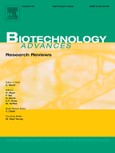
M. Mirzaee, Z. Osmani, J. Frébortová and I. Frébort, "Recent advances in molecular farming using monocot plants," BIOTECHNOLOGY ADVANCES, vol. 58, pp. 107913, 2022.
DOI: 10.1016/j.biotechadv.2022.107913, IF = 14.227
Abstract: Heterologous synthesis of proteins or peptides in plant-based systems, referred to as plant molecular farming, is a practical and safe approach for the large-scale and cost-effective production of therapeutic biomolecules. In this context, monocotyledonous plants, and especially cereals, have been considered attractive vehicles for producing high-value recombinant proteins. The endosperm, as the largest grain storage compartment, offers an appropriate environment for long-lasting protein accumulation. During the last decades, fascinating progress has been achieved in the gene transfer technology and genetic manipulation of the monocot crops using either Agrobacterium tumefaciens or direct gene transfer by biolistic methods. Our group has recently expressed biologically active recombinant human peptide cathelicidin in barley grains using endosperm-specific promoter and brought such engineered lines to field cultivation under current EU regulations for genetically modified organisms. This article reviews the most recent advances and strategies for the production of biopharmaceutical proteins in transgenic monocots, highlighting various aspects involved in recombinant protein accumulation in grains, and discussing current bottlenecks and perspectives for the biosynthesis of therapeutic molecules using different monocot plant platforms.
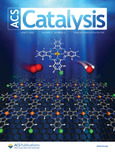
T. Jing, N. Zhang, C. Zhang, S. Mourdikoudis, Z. Sofer, W. Li, P. Li, T. Li, Y. Zuo and D. Rao, "Improving C–N–FeOx Oxygen Evolution Electrocatalysts through Hydroxyl-Modulated Local Coordination Environment," ACS CATALYSIS, vol. 12, iss. 12, pp. 7443-7452, 2022.
DOI: 10.1021/acscatal.2c01153, IF = 13.700
Abstract: Ultrafine FeOx in the sub-nanometric or atomic scale is one of the promising catalysts for boosted oxygen evolution reaction (OER) activity, although there is further potential for improvement in comparison to commercial catalysts. Recent studies show that hydroxyl modification on the surface of catalysts can ameliorate hydrophilicity and catalytic activity, thus helping to bring such catalysts closer to scale-up and commercialization stages. To deeply understand the effect of hydroxyl, atomic-level dispersed FeOx in porous carbon nitride (CN-FeOx) was proposed through a spatially confined approach, which involved an in situ coordination effect between resorcinol and Fe ions. After hydroxyl modification, the generated CN-FeOx-OH hybrid material displayed significantly enhanced mass activity compared to CN-FeOx and commercial RuO2 (0.16 A/mgmetal) under an overpotential of 350 mV versus RHE. Additionally, the improved stability of CN-FeOx-OH suppresses migration and aggregation. The DFT calculations revealed a distinct catalytic mechanism in which the active center composed of multisites modified by hydroxyl exhibited a strong synergistic effect to modulate the adsorption behaviors of OH and O intermediates, which possessed the optimal adsorption energy for enhanced activity as compared with a single site in the CN-FeOx-OH and CN-FeOx, respectively. The adopted strategies in this paper can effectively promote the application of Fe-based catalysts in OER.
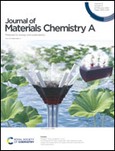
H. Saini, E. Otyepková, A. Schneemann, R. Zbořil, M. Otyepka, R. A. Fischer and K. Jayaramulu, "Hierarchical porous metal–organic framework materials for efficient oil–water separation," JOURNAL OF MATERIALS CHEMISTRY A, vol. 10, iss. 6, pp. 2751-2785, 2022.
DOI: 10.1039/d1ta10008d, IF = 12.732
Abstract: Oil contaminated water is a global issue, decreasing the quality of water sources and is posing a threat to the health of humans and many ecosystems. The utilization of industrial level strategies is limited mainly due to their complex and time-consuming processing. Considering this, we choose materials for separating oils from water based on their ease of handling and good performance. However, high surface area porous materials, such as linens, zeolites, cotton, etc., offer low efficiency for oil/water separation. Special wettability is the most promising property of materials and is helpful for oil–water separation. Metal–organic frameworks (MOFs), a class of highly tunable porous structures of metal clusters/ions and multidentate organic ligands, offer exciting prospects for various applications. The unique tunability of the structure and properties of these materials can endow them with special wettability for the treatment of oily water. This review focuses on hydrophobic–oleophilic, hydrophilic–underwater oleophobic and switchable wettability MOFs and their implementation as oil/water separating materials. We classify different MOF-based materials as filtration materials, absorbents or adsorbents based on the methodology they are used in for separating oil/water mixtures and emulsions. We discuss different subclasses of MOF-based filtration, absorbent and adsorbent materials and summarize recent developments in their oil/water separation applications. Finally, we end our discussion by critically analyzing the importance of these MOFs for separating oils from water and highlighting potential future directions for achieving improved performance.
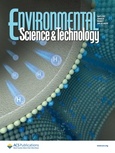
M. Brumovský, J. Oborná, V. Micić, O. Malina, J. Kašlík, D. Tunega, M. Kolos, T. Hofmann, F. Karlický and J. Filip, "Iron Nitride Nanoparticles for Enhanced Reductive Dechlorination of Trichloroethylene," ENVIRONMENTAL SCIENCE & TECHNOLOGY, vol. 56, iss. 7, pp. 4425-4436, 2023.
DOI: 10.1021/acs.est.1c08282, IF = 11.357
Abstract: Nitriding has been used for decades to improve the corrosion resistance of iron and steel materials. Moreover, iron nitrides (FexN) have been shown to give an outstanding catalytic performance in a wide range of applications. We demonstrate that nitriding also substantially enhances the reactivity of zerovalent iron nanoparticles (nZVI) used for groundwater remediation, alongside reducing particle corrosion. Two different types of FexN nanoparticles were synthesized by passing gaseous NH3/N2 mixtures over pristine nZVI at elevated temperatures. The resulting particles were composed mostly of face-centered cubic (γ′-Fe4N) and hexagonal close-packed (ε-Fe2–3N) arrangements. Nitriding was found to increase the particles’ water contact angle and surface availability of iron in reduced forms. The two types of FexN nanoparticles showed a 20- and 5-fold increase in the trichloroethylene (TCE) dechlorination rate, compared to pristine nZVI, and about a 3-fold reduction in the hydrogen evolution rate. This was related to a low energy barrier of 27.0 kJ mol–1 for the first dechlorination step of TCE on the γ′-Fe4N(001) surface, as revealed by density functional theory calculations with an implicit solvation model. TCE dechlorination experiments with aged particles showed that the γ′-Fe4N nanoparticles retained high reactivity even after three months of aging. This combined theoretical-experimental study shows that FexN nanoparticles represent a new and potentially important tool for TCE dechlorination.

P. Ghaffari-Bohlouli, H. Jafari, N. Taebnia, A. Abedi, A. Amirsadeghi, S. V. Niknezhad, H. Alimoradi, S. Jafarzadeh, M. Mirzaei, L. Nie, J. Zhang, R. S. Varma and A. Shavandi, "Protein by-products: Composition, extraction, and biomedical applications," CRITICAL REVIEWS IN FOOD SCIENCE AND NUTRITION, 2022.
DOI: 10.1080/10408398.2022.2067829, IF = 11.208
Abstract: Significant upsurge in animal by-products such as skin, bones, wool, hides, feathers, and fats has become a global challenge and, if not properly disposed of, can spread contamination and viral diseases. Animal by-products are rich in proteins, which can be used as nutritional, pharmacologically functional ingredients, and biomedical materials. Therefore, recycling these abundant and renewable by-products and extracting high value-added components from them is a sustainable approach to reclaim animal by-products while addressing scarce landfill resources. This article appraises the most recent studies conducted in the last five years on animal-derived proteins’ separation and biomedical application. The effort encompasses an introduction about the composition, an overview of the extraction and purification methods, and the broad range of biomedical applications of these ensuing proteins.
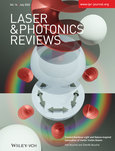
R. Yalavarthi, O. Yesilyurt, O. Henrotte, Š. Kment, V. M. Shalaev, A. Boltasseva and A. Naldoni, "Multimetallic Metasurfaces for Enhanced Electrocatalytic Oxidations in Direct Alcohol Fuel Cells," LASER & PHOTONICS REVIEWS, vol. 16, iss. 7, pp. 2200137, 2022.
DOI: 10.1002/lpor.202200137, IF = 10.947
Abstract: Plasmonic metasurfaces enable unprecedented manipulation of light by using periodic arrangement of resonant unit cells or nanoantennas. Here, multimetallic metasurfaces made of self-standing Ni/Au-Pt nanostructured films are shown to significantly enhance an electrocatalytic oxidation reaction employed in direct alcohol fuel cells. The Ni/Au metasurfaces support photonic and plasmonic modes, which are leveraged for the site-selective deposition of Pt electrocatalysts within the electromagnetic hot spots, where their reactivity can be strongly increased. The enhanced electrocatalytic activity for the methanol oxidation reaction (MOR) is primarily attributed to electronic effects due to the excitation of hot charge carriers and plasmonic near fields, as supported by electromagnetic simulations and kinetic isotopic experiments. Wavelength-dependent photoelectrochemical investigations suggest that Ni/Au-Pt metasurfaces enhances MOR over a broad spectral range and favors different light-induced reaction mechanisms depending on the selected energy window.
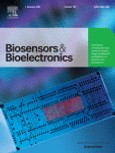
J. M. Flauzino, E. P. Nguyen, Q. Yang, G. Rosati, D. Panáček, A. G. Brito-Madurro, J. M. Madurro, A. Bakandritsos, M. Otyepka and A. Merkoçi, "Label-free and reagentless electrochemical genosensor based on graphene acid for meat adulteration detection," BIOSENSORS AND BIOELECTRONICS, vol. 195, pp. 113628, 2022.
DOI: 10.1016/j.bios.2021.113628, IF = 10.618
Abstract: With the increased demand for beef in emerging markets, the development of quality-control diagnostics that are fast, cheap and easy to handle is essential. Especially where beef must be free from pork residues, due to religious, cultural or allergic reasons, the availability of such diagnostic tools is crucial. In this work, we report a label-free impedimetric genosensor for the sensitive detection of pork residues in meat, by leveraging the biosensing capabilities of graphene acid - a densely and selectively functionalized graphene derivative. A single stranded DNA probe, specific for the pork mitochondrial genome, was immobilized onto carbon screen-printed electrodes modified with graphene acid. It was demonstrated that graphene acid improved the charge transport properties of the electrode, following a simple and rapid electrode modification and detection protocol. Using non-faradaic electrochemical impedance spectroscopy, which does not require any electrochemical indicators or redox pairs, the detection of pork residues in beef was achieved in less than 45 min (including sample preparation), with a limit of detection of 9% w/w pork content in beef samples. Importantly, the sample did not need to be purified or amplified, and the biosensor retained its performance properties unchanged for at least 4 weeks. This set of features places the present pork DNA sensor among the most attractive for further development and commercialization. Furthermore, it paves the way for the development of sensitive and selective point-of-need sensing devices for label-free, fast, simple and reliable monitoring of meat purity.
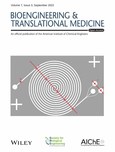
M. Ashrafizadeh, K. Hushmandi, S. Mirzaei, S. Bokaie, A. Bigham, P. Makvandi, N. Rabiee, V. K. Thakur, A. P. Kumar, E. Sharifi, R. S. Varma, A. R. Aref, M. Wojnilowicz, A. Zarrabi, H. Karimi‐Maleh, N. H. Voelcker, E. Mostafavi and G. Orive, "Chitosan‐based nanoscale systems for doxorubicin delivery: Exploring biomedical application in cancer therapy," BIOENGINEERING & TRANSLATIONAL MEDICINE, vol. 8, iss. 1, pp. e10325, 2022.
DOI: 10.1002/btm2.10325, IF = 10.684
Abstract: Green chemistry has been a growing multidisciplinary field in recent years showing great promise in biomedical applications, especially for cancer therapy. Chitosan (CS) is an abundant biopolymer derived from chitin and is present in insects and fungi. This polysaccharide has favorable characteristics, including biocompatibility, biodegradability, and ease of modification by enzymes and chemicals. CS-based nanoparticles (CS-NPs) have shown potential in the treatment of cancer and other diseases, affording targeted delivery and overcoming drug resistance. The current review emphasizes on the application of CS-NPs for the delivery of a chemotherapeutic agent, doxorubicin (DOX), in cancer therapy as they promote internalization of DOX in cancer cells and prevent the activity of P-glycoprotein (P-gp) to reverse drug resistance. These nanoarchitectures can provide co-delivery of DOX with antitumor agents such as curcumin and cisplatin to induce synergistic cancer therapy. Furthermore, co-loading of DOX with siRNA, shRNA, and miRNA can suppress tumor progression and provide chemosensitivity. Various nanostructures, including lipid-, carbon-, polymeric- and metal-based nanoparticles, are modifiable with CS for DOX delivery, while functionalization of CS-NPs with ligands such as hyaluronic acid promotes selectivity toward tumor cells and prevents DOX resistance. The CS-NPs demonstrate high encapsulation efficiency and due to protonation of amine groups of CS, pH-sensitive release of DOX can occur. Furthermore, redox- and light-responsive CS-NPs have been prepared for DOX delivery in cancer treatment. Leveraging these characteristics and in view of the biocompatibility of CS-NPs, we expect to soon see significant progress towards clinical translation.
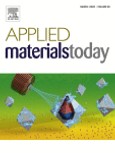
I. Dědek, V. Kupka, P. Jakubec, V. Šedajová, K. Jayaramulu and M. Otyepka, "Metal-organic framework/conductive polymer hybrid materials for supercapacitors," APPLIED MATERIALS TODAY, vol. 26, pp. 101387, 2022.
DOI: 10.1016/j.apmt.2022.101387, IF = 10.041
Abstract: This review article focuses on supercapacitor electrode materials based on composites of metal-organic frameworks (MOFs) and conductive polymers (CPs). MOFs have attracted enormous attention due to their unique properties such as high porosity, nanoscale periodicity, large surface area and structural diversity. The major disadvantage of MOFs for energy storage applications is their low electrical conductivity. Combining MOFs with other (nano)materials is an effective strategy to increase the specific capacitance and overall performance of electrode materials. CPs are attractive compounds because of their controllable conductivity and mechanical properties, particularly including large specific capacitance, ease of fabrication, high environmental stability and good film-forming properties. This review mostly deals with hybridization strategies and discusses critically various types of CPs with different MOFs in relation to hybridization techniques and obtained results. An excellent summary of MOF@CP hybrids is provided with respect to recent advances in this field and presents new perspectives for enhancing the electrochemical performance of future MOF@CP supercapacitors.
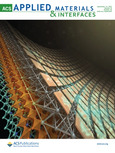
K. Eid, M. H. Sliem, M. Al-Ejji, A. M. Abdullah, M. Harfouche and R. S. Varma, "Hierarchical Porous Carbon Nitride-Crumpled Nanosheet-Embedded Copper Single Atoms: An Efficient Catalyst for Carbon Monoxide Oxidation," ACS APPLIED MATERIALS & INTERFACES, vol. 14, iss. 36, pp. 40749-40760, 2022.
DOI: 10.1021/acsami.2c06782, IF = 10.383
Abstract: Rational design of metal single-site embedded porous graphitic carbon nitride (P-g-C3N4) nanostructures exploiting maximum atom utilization is warranted to enhance the thermal CO oxidation (COOx) reaction. Herein, a facile, green, one-pot, and template-free approach is developed to fabricate the hierarchical porous P-g-C3N4-crumpled ultrathin nanosheets atomically doped with copper single atoms (Cu–P-g-C3N4). Mechanistically, the quick protonation of melamine and pyridine under acidic conditions induces deamination to form melem, which is polycondensed under heating. The interconnected pores, high surface area (240 m2g–1), and maximized exposed isolated Cu atomic active sites (1.8 wt %) coordinated with nitrogen atom P-g-C3N4 are the salient features of Cu– P-g-C3N4 that endowed complete conversion to CO2 at 184 °C. In contrast, P-g-C3N4 only converted 3.8% of CO even at 350 °C, implying the electronic effect of Cu single atoms. The abundant Cu-nitrogen moieties can drastically weaken the binding affinity of the CO-oxidation (COOx) intermediates and products, thus accelerating the reaction kinetics at a low temperature. This study may promote the fabrication of P-g-C3N4 doped with various single atoms for the oxidation of CO.
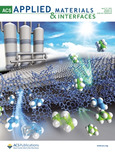
B. R. Bricchi, L. Mascaretti, S. Garattoni, M. Mazza, M. Ghidelli, A. Naldoni and A. Li Bassi, "Nanoporous Titanium (Oxy)nitride Films as Broadband Solar Absorbers," ACS APPLIED MATERIALS & INTERFACES, vol. 14, iss. 16, pp. 18453-18463, 2022.
DOI: 10.1021/acsami.2c01185, IF = 10.383
Abstract: Broadband absorption of solar light is a key aspect in many applications that involve an efficient conversion of solar energy to heat. Titanium nitride (TiN)-based materials, in the form of periodic arrays of nanostructures or multilayers, can promote significant heat generation upon illumination thanks to their efficient light absorption and refractory character. In this work, pulsed laser deposition was chosen as a synthesis technique to shift metallic bulk-like TiN to nanoparticle-assembled hierarchical oxynitride (TiOxNy) films by increasing the background gas deposition pressure. The nanoporous hierarchical films exhibit a tree-like morphology, a strong broadband solar absorption (∼90% from the UV to the near-infrared range), and could generate temperatures of ∼475 °C under moderate light concentration (17 Suns). The high heat generation achieved by treelike films is ascribed to their porous morphology, nanocrystalline structure, and oxynitride composition, which overall contribute to a superior light trapping and dissipation to heat. These properties pave the way for the implementation of such films as solar absorber structures.

S. Rej, S. M. H. Hejazi, Z. Badura, G. Zoppellaro, S. Kalytchuk, Š. Kment, P. Fornasiero and A. Naldoni, "Light-Induced Defect Formation and Pt Single Atoms Synergistically Boost Photocatalytic H2 Production in 2D TiO2-Bronze Nanosheets," ACS SUSTAINABLE CHEMISTRY & ENGINEERING, vol. 10, iss. 51, pp. 17286-17296, 2022.
DOI: 10.1021/acssuschemeng.2c05708, IF = 9.224
Abstract: Ultrathin two-dimensional (2D) semiconductor nanosheets decorated with single atomic species (SAs) have recently attracted increasing attention due to their abundant surface-exposed reactive sites and maximum SAs binding capabilities thus lowering the catalyst cost, without sacrificing high performance for photocatalytic hydrogen (H2) production from water. Here, we present a strategy to prepare titanium dioxide-bronze nanosheets (TiO2-BNS) and H2-reduced TiO2 nanosheets (TiO2-HRNS) synthesized, characterized, and applied for photocatalytic H2 production. Surprisingly, black TiO2-HRNS show complete photo inactivity, while the TiO2-BNS-Pt0.05 nanohybrid shows excellent H2 production rate with a very low loading of 0.05 wt % Pt. TiO2-BNS-Pt0.05 presents around 10 and 99 times higher photocatalytic rate than pristine TiO2-BNS under solar and 365 nm UV-LED light irradiation, respectively. Due to the 2D morphology and the presence of abundant coordinating sites, the successful formation of widely dispersed Pt SAs was achieved. Most excitingly, the in situ formation of surface-exposed defect sites (Ti3+) was observed for TiO2-BNS under light illumination, suggesting their significant role in enhancing the H2 production rate. This self-activation and amplification behavior of TiO2-BNS can be extended to other 2D systems and applied to other photocatalytic reactions, thus providing a facile approach for fully utilizing noble metal catalysts via the successful formation of SAs.
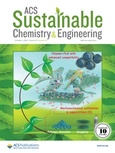
X. T. Cao, D. M. Kabtamu, S. Kumar and R. S. Varma, "Advances in Thermo-, Photo-, and Electrocatalytic Continuous Conversion of Carbon Dioxide into Liquid Chemicals," ACS SUSTAINABLE CHEMISTRY & ENGINEERING, vol. 10, iss. 39, pp. 12906-12932, 2022.
DOI: 10.1021/acssuschemeng.2c02491, IF = 9.224
Abstract: The enormous research activity on the capture and conversion of CO2 into useful entities is the manifestation of scientific concerns over climate change due to increased accumulation of CO2 in the atmosphere. Although several thermo-, photo-, and electrocatalytic methods have been developed to convert CO2 into various important chemicals including fuels, most of them have not been successfully implemented at the industrial level. The one of the apparent reasons is the thermodynamic stability of CO2 that restricts their deployment at industrial scale because of the limitations associated with the strategy of amplifying batch reactors. Flow chemistry is an effective tool not only to develop continuous processes but also to intensify existing ones; implementation of flow processes at the commercial level is more desirable than that of batch processes. Thus, the application of flow chemistry in the CO2 conversion domain has paved the way to develop continuous methodology and, not surprisingly, has garnered tremendous attention recently. Herein, the recent progress in continuous flow conversion of CO2 into liquid chemicals via thermo-, photo-, and electrocatalytic processes is discussed including the importance of catalyst development, flow reaction parameters, and the type of flow reactors for developing a productive continuous flow process; existing challenges and future perspectives on flow chemistry for CO2 conversion are highlighted.
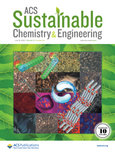
A. Sindhu, R. S. Varma and P. Venkatesu, "Cholinium-Based Ionic Liquids Attenuate the Amyloid Fibril Formation of Lysozyme: A Greener Concept of Antiamyloidogenic Ionic Liquids," ACS SUSTAINABLE CHEMISTRY & ENGINEERING, vol. 10, iss. 28, pp. 9242-9253, 2022.
DOI: 10.1021/acssuschemeng.2c02963, IF = 9.224
Abstract: Amyloid fibrils share dominant β-sheet structures that form pathological deposits in human organs causing various debilitating neurodegenerative diseases such as type II diabetes, Huntington’s, Alzheimer’s, and Parkinson’s diseases, and thus, the treatment of these amyloid-based diseases is a major overriding concern. Ionic liquids (ILs), being biocompatible solvent medium for proteins, have been introduced as effective antiamyloidogenic agents to prevent the fibrillation process; bio-derived cholinium-based ILs ([Chn] ILs) deserve special attention in view of their inhibitory action on protein amyloid formation to enable the restoration of its biochemical function. Herein, the antiamyloidogenic action of four [Chn] ILs, namely cholinium acetate [Chn][Ac], cholinium bitartarate [Chn][Bit], cholinium chloride [Chn][Cl], and cholinium dihydrogen phosphate [Chn][Dhp], on the in vitro amyloid formation of the lysozyme (Lys) was investigated by applying ThT fluorescence, circular dichroism (CD), and Fourier transform infrared (FT-IR) spectroscopy. Additionally, transmission electronic microscopy (TEM), dynamic light scattering (DLS), and atomic force microscopy (AFM) measurements were also performed to ascertain the morphological changes. Interestingly, with incubation of Lys without ILs there was a substantial increase in thioflavin T (ThT) fluorescence intensity for the Lys, confirming the formation of Lys fibrillar aggregates. The results of FT-IR and UV-CD measurements showed that the Lys secondary structure was retained in the presence of the [Chn][Bit] and [Chn][DHP] ILs, which was lost in the absence of these ILs in the incubating conditions. It was further inferred by morphological analysis via TEM, AFM, and DLS that through thermochemical treatment of Lys, fibrils were formed, and these [Chn] ILs exhibit an increased propensity to suppress the formation of mature fibrils. Overall, the inhibition efficiency of these [Chn] ILs is accredited to the bio-derived cholinium cations as well as the nature of anions based on Hofmeister series. The present study offers a deep insight into the role of ILs in controlling the fibril formation in proteins and thus, they may serve as agents to remediate neurodegenerative diseases.
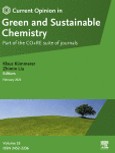
E. Avirdi, S. E. Hooshmand, H. Sepahvand, V. Vishwanathan, I. Bahadur, L. M. Katata-Seru and R. S. Varma, "Ionic liquids-assisted greener preparation of silver nanoparticles," CURRENT OPINION IN GREEN AND SUSTAINABLE CHEMISTRY, vol. 33, pp. 100581, 2022.
DOI: 10.1016/j.cogsc.2021.100581, IF = 8.843
Abstract: The synthesis and stabilization of silver nanoparticles (Ag NPs) in a broad range of available ionic liquids (ILs) as green media, are reviewed. Conventionally, one of the drawbacks concerning the synthesis of silver nanoparticles is the apparent agglomeration during their preparation and application. In view of the presence of electrostatic, steric, and tunable nature of ionic liquids, Ag NPs can be ideally synthesized in ILs without the need for any additional stabilizer, surfactant, or ligands.
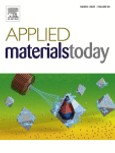
R. Ahmad, L. Zdražil, S. Kalytchuk, A. Naldoni, E. Mohammadi, P. Schmuki, R. Zboril and Š. Kment, "Robust dual cationic ligand for stable and efficient warm-white light emission in lead-free double perovskite nanocrystals," APPLIED MATERIALS TODAY, vol. 26, pp. 101288, 2022.
DOI: 10.1016/j.apmt.2021.101288, IF = 8.663
Abstract: Bismuth-doped alloyed Cs2Ag1-xNaxInCl6 double perovskite nanocrystals (DP NCs) emerged as a new class of lead-free alternative for single-emitter-based solution-processed white-light-emitting devices (WLEDs). However, their thin-film processing and device fabrication have been limited due to low photoluminescence (PL) quantum yield (QY) and degradation during purification from the as-synthesized crude solution. Moreover, easy reduction of a silver ions by oleylamine also raised concern regarding stability issues of silver based DP NCs. Here, we report a facile synthesis and purification method for shape-pure and monodispersed bismuth-doped alloyed Cs2Ag1-xNaxInCl6 DP NCs with high PL QY and long-term stability. At optimized bismuth-doping, alloyed Cs2Ag0.4Na0.6InCl6 DP NCs showed warm white-light-emission with a PL QY of 40% due to suppressed non-radiative recombination. The synthesis of highly emissive and stable DP NCs was achieved by utilizing a combination of strongly coordinating silver-trioctylphosphine (Ag-TOP) complex along with additional TOP ligand. The Ag-TOP complex served as a highly reactive silver precursor and prevented the reduction of silver ions into metallic silver. While TOP facilitated the nucleophilic reaction with benzoyl chloride during nucleation and growth stage and forms benzoyl trioctylphosphonium chloride intermediate that served as both halide source and surface capping ligand which enabled the formation of high-quality DP NCs. The high tolerance of DP NCs against common antisolvents such as methyl acetate and isopropanol was attributed to the tight binding of dual cationic ligand benzoyl trioctylphosphonium and oleylammonium cations together with oleate anion to the surface of DP NCs.

A. Hazrati, S. Soudi, K. Malekpour, M. Mahmoudi, A. Rahimi, S. M. Hashemi and R. S. Varma, "Immune cells-derived exosomes function as a double-edged sword: role in disease progression and their therapeutic applications," BIOMARKER RESEARCH, vol. 10, iss. 1, 2022.
DOI: 10.1186/s40364-022-00374-4, IF = 8.633
Abstract: Exosomes, ranging in size from 30 to 150 nm as identified initially via electron microscopy in 1946, are one of the extracellular vesicles (EVs) produced by many cells and have been the subject of many studies; initially, they were considered as cell wastes with the belief that cells produced exosomes to maintain homeostasis. Nowadays, it has been found that EVs secreted by different cells play a vital role in cellular communication and are usually secreted in both physiological and pathological conditions. Due to the presence of different markers and ligands on the surface of exosomes, they have paracrine, endocrine and autocrine effects in some cases. Immune cells, like other cells, can secrete exosomes that interact with surrounding cells via these vesicles. Immune system cells-derived exosomes (IEXs) induce different responses, such as increasing and decreasing the transcription of various genes and regulating cytokine production. This review deliberate the function of innate and acquired immune cells derived exosomes, their role in the pathogenesis of immune diseases, and their therapeutic appliances.
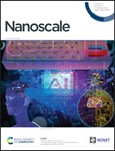
V. Hrubý, D. Zaoralová, M. Medveď, A. Bakandritsos, R. Zbořil and M. Otyepka, "Emerging graphene derivatives as active 2D coordination platforms for single-atom catalysts," NANOSCALE, vol. 14, iss. 37, pp. 13490-13499, 2022.
DOI: 10.1039/d2nr03453k, IF = 8.307
Abstract: Single-atom catalysts (SACs) based on graphene derivatives are an emerging and growing class of materials functioning as two-dimensional (2D) metal-coordination scaffolds with intriguing properties. Recently, owing to the rich chemistry of fluorographene, new avenues have opened toward graphene derivatives with selective, spacer-free, and dense functionalization, acting as in-plane or out-of-plane metal coordination ligands. The particular structural features give rise to intriguing phenomena occurring between the coordinated metals and the graphene backbone. These include redox processes, charge transfer, emergence, and stabilization of rare or otherwise unstable metal valence states, as well as metal–support and metal–metal synergism. The vast potential of such systems has been demonstrated as enzyme mimics for cooperative mixed-valence SACs, ethanol fuel cells, and CO2 fixation; however, it is anticipated that their impact will further expand toward diverse fields, e.g., advanced organic transformations, electrochemical energy storage, and energy harvesting.
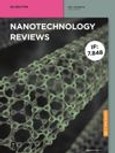
L. Giri, S. R. Rout, R. S. Varma, M. Otyepka, K. Jayaramulu and R. Dandela, "Recent advancements in metal–organic frameworks integrating quantum dots (QDs@MOF) and their potential applications," NANOTECHNOLOGY REVIEWS, vol. 11, iss. 1, pp. 1947-1976, 2022.
DOI: 10.1515/ntrev-2022-0118, IF = 7.848
Abstract: Design and development of new materials and their hybrids are key to addressing current energy issues. Thanks to their tunable textural and physiochemical properties, metal–organic frameworks (MOFs) show great potential toward gas sorption, catalysis, sensing, and electrochemical energy applications. Nevertheless, practical applications of MOFs have been hampered because of their limited electrical conductivity, micropore size, and poor stability. However, smart integration of zero-dimensional quantum dots (QDs) into an MOF template, where the host structure offers suitable interactions for enhancing the stability and synergic properties, may be a solution. The objective of this review is to summarize recent advances in the field of QD@MOFs, highlighting fresh approaches to synthesis strategies and progress made in their application to optoelectronic devices, sensing, biomedical, catalysis, and energy storage. The current challenges and future directions of QDs@MOFs hybrids toward advancing energy and environmental applications are also addressed. We anticipate that this review will inspire researchers to develop novel MOF hybrids for energy, optoelectronics, and biomedical applications.
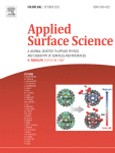
M. Pykal, M. Vondrák, M. Šrejber, I. Tantis, E. Mohammadi, A. Bakandritsos, M. Medveď and M. Otyepka, "Accessibility of grafted functional groups limits reactivity of covalent graphene derivatives," APPLIED SURFACE SCIENCE, vol. 598, pp. 153792, 2022.
DOI: 10.1016/j.apsusc.2022.153792, IF = 7.392
Abstract: Graphene derivatives are an emerging and important class of promising materials because they can bear a wide variety of functional groups, rendering them suitable for a plethora of applications, ranging from energy storage to sensorics. Further functionalisation of these materials requires a thorough understanding of their reactivity at the molecular level because the organic functional groups are close to an effectively infinite surface, which may affect their reactivity. Nitrile groups grafted on a graphene can be easily hydrolysed to carboxyl groups, but they are resistant to reduction by LiAlH4. Here, we combine theoretical and experimental methods to explain the resistance of CN groups grafted on the graphene surface in terms of the limited accessibility of these groups for the reduction agent. We highlight that such mechanistic aspects, i.e., steric hindrance of the reaction centres and surface-solvent interactions, play a crucial role in the reactivity of 2D materials.
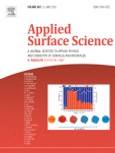
V. Hrubý, L. Zdražil, J. Dzíbelová, V. Šedajová, A. Bakandritsos, P. Lazar and M. Otyepka, "Unveiling the true band gap of fluorographene and its origins by teaming theory and experiment," APPLIED SURFACE SCIENCE, vol. 587, pp. 152839, 2022.
DOI: 10.1016/j.apsusc.2022.152839, IF = 7.392
Abstract: Fluorographene is a fully fluorinated derivative of graphene. Unlike graphene, fluorographene is a wide gap semiconductor/insulator that holds great potential for applications requiring two-dimensional dielectric nanomaterials. Despite growing interest and a well-defined structure, the basic questions of fluorographene’s band gap nature and value remain a conundrum. Here, we resolve this long-standing issue, demonstrating a direct optical band gap at 5.75 eV by means of diffuse reflectance spectroscopy. The nature of the band gap and the factors contributing to earlier controversies are explained by combining spectroscopic methods, ab initio calculations based on the finite momentum Bethe-Salpeter equation, and structural characterization via x-ray diffraction and Raman scattering. Ab initio calculations complement the experimental results by showing an excitonic peak at 5.65 eV of a Frenkel exciton bound to a single atom. The calculations also reveal that the absorption bands at lower energies arise from the presence of fluorine vacancies in the material, which explains earlier controversies in the literature about the band gap of fluorographene.
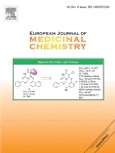
S. S. Massoud, F. R. Louka, N. M. Salem, R. C. Fischer, A. Torvisco, F. A. Mautner, J. Vančo, J. Belza, Z. Dvořák and Z. Trávníček, "Dinuclear doubly bridged phenoxido copper(II) complexes as efficient anticancer agents," EUROPEAN JOURNAL OF MEDICINAL CHEMISTRY, vol. 246, , pp. 114992, 2023.
DOI: 10.1016/j.ejmech.2022.114992, IF = 7.088
Abstract: Two cationic [Cu2(L1-2)2](ClO4)2 (1, 2), and four neutral doubly bridged-phenoxido-copper(II) complexes [Cu2(L3-4)2] (3, 4) and [Cu2(L5-6)2(H2O)]‧2H2O (5, 6) as well as 1D polymeric catena-[Cu(L7)] (7), where HL1-2 and H2L3-7 represent tripodal tetradentate pyridyl or aliphatic-amino groups based 2,4-disubstituted phenolates, were synthesized and thoroughly characterized by various spectroscopic methods and single crystal X-ray analysis. The molecular structures of the complexes exhibited diverse geometrical environments around the central Cu(II) atoms. The in vitro antiproliferative activity of the isolated complexes and selected parent free ligands were screened against some human cancer cell lines (A2780, A2780R, PC-3, 22Rv1, MCF-7). The most promising cytotoxicity against cancer cells were obtained for 1–6, while complex 6 was found as the best performing as compared to the reference drug cisplatin. The cytotoxicity study of complex 6 was therefore extended to wider variety of cancer cell lines (HOS, A549, PANC-1, CaCo2, HeLa) and results revealed its significant cytotoxicity on all investigated human cancer cells. The cell uptake study showed that cytotoxicity of 6 (3 μM concentration and 24 h of incubation) against A2780 cells was almost independent from the intracellular levels of copper. The effect of complexes 4, 6 and 7 on cell cycle of A2780 cells indicates that the mechanism of action in these complexes is not only different from that of cisplatin but also different among them. Complex 7 was able to induce apoptosis in A2780 cells, while complexes 4 and 6 did not and on the other hand, they showed considerable effect on autophagy induction and there are some clues that these complexes were able to induce cuproptosis in A2780 cells.
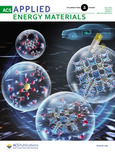
J. Rehman, K. Eid, R. Ali, X. Fan, G. Murtaza, M. Faizan, A. Laref, W. Zheng and R. S. Varma, "Engineering of Transition Metal Sulfide Nanostructures as Efficient Electrodes for High-Performance Supercapacitors," ACS APPLIED ENERGY MATERIALS, vol. 5, iss. 6, pp. 6481-6498, 2022.
DOI: 10.1021/acsaem.1c03937, IF = 6.959
Abstract: Supercapacitors (SCs) are highly promising electrochemical energy conversion and storage devices. SCs display an outstanding power performance, excellent reversibility, long-term stability, simple operation, and high feasibility for integration into electronic devices, including consumer electronics, memory backup systems, and industrial power and energy management systems. The electrode materials determine the cell capacitance, operating voltage, power density, energy density, and time constant of SCs. Transition metal-based electrode materials (TMEMs) are among the most promising electrodes for SCs, due to their outstanding energy density, specific capacitance, and quick charging/discharging rates, in addition to their ease of preparation in a high yield from low-cost and earth-abundant resources. Binary transition metal sulfides (BTMSs) possess various advantages relative to other TMEMs, including higher storage capacity, higher electrical conductivity, excellent redox properties, better specific capacitance, quicker electron/ion diffusion, and superior reversibility with long cycle life. Herein, the inventory and the recent progress in the rational design of BTMS electrodes for SCs are deliberated, spaning from the preparation methods to the operative conditions, performance, and mechanism. To help assist in the further development of BTMS electrodes for efficient and durable SCs, current underlying challenges and possible solutions are identified and addressed, with emphasis on device performance vs BTMS type and relative merits.
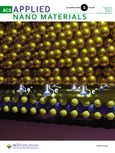
G. J. Soufi, A. Hekmatnia, S. Iravani and R. S. Varma, "Nanoscale Contrast Agents for Magnetic Resonance Imaging: A Review," ACS APPLIED NANO MATERIALS, vol. 5, iss. 8, pp. 10151-10166, 2022.
DOI: 10.1021/acsanm.2c03297, IF = 6.140
Abstract: Today, magnetic resonance imaging (MRI) is one of the most widely applied noninvasive clinical imaging modalities with excellent applicability in bio- and nanomedicine, particularly in specific detecting and high-quality three-dimensional imaging of tumors/cancers. In this context, the design of efficient nanoscale contrast agents (NCAs) for MRI with high magnetic relaxivity and specificity/selectivity has garnered immense interest deploying a variety of innovatively designed nanostructures. Some important characteristics of NCAs such as biocompatibility, improved relaxivity, high dispersibility, specific targeting, and low toxicity make them ideal candidates for imaging/biosensing applications. The hybridization and surface functionalization/modification of these materials by applying suitable functional groups/agents can help to improve their properties and multifunctionality. However, there is still a long way to go in the clinical applications of these nanoagents to serve as a substitute for Gd-based contrast agents or other commercial materials. Importantly, nanotoxicological and biosafety issues of these NCAs need to be systematically addressed both at pre- and clinical stages; construction of smart multifunctional NCAs with clinical diagnostic and imaging potentials is thus warranted. Herein, recent advancements related to the diagnostic and imaging applications of MRI NCAs are deliberated, focusing on important challenges and future directions.
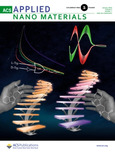
A. Shafiee, N. Rabiee, S. Ahmadi, M. Baneshi, M. Khatami, S. Iravani and R. S. Varma, "Core–Shell Nanophotocatalysts: Review of Materials and Applications," ACS APPLIED NANO MATERIALS, vol. 5, iss. 1, pp. 55-86, 2022.
DOI: 10.1021/acsanm.1c03714, IF = 6.140
Abstract: Hybrid nanostructures and nanoarchitectures possess unique physicochemical properties such as high activity/functionality, enhanced physicochemical stability, and improved biocompatibility, which renders them suitable for various biomedical, pharmaceutical, environmental, and catalytic applications. In this context, core–shell nanophotocatalysts have shown superior activity compared to their counterparts, namely, their individual pristine semiconductors and composite materials components. Thus, the development of various innovative core–shell nanostructures as photocatalysts is of practical relevance in view of their unique properties with salient advantageous features applicable to, among others, the degradation of organic pollutants, energy storage, and H2 generation. Assorted techniques are deployed to synthesize core–shell nanostructures, including chemical vapor deposition, sol–gel, hydrothermal, spin-coating deposition, solvothermal, combustion waves, microwave (MW)- and ultrasonic-assisted, electrodeposition, laser ablation, and biological approaches. Because core–shell nanostructures provide an immense opportunity to have the most efficient photocatalysts with high stability and reproducibility; herein, the recent advances in this domain are discussed, comprising the most important fabrication techniques and diverse appliances including important challenges and unrealized opportunities.
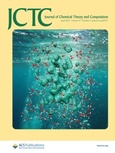
V. Mlýnský, M. Janeček, P. Kührová, T. Fröhlking, M. Otyepka, G. Bussi, P. Banáš and J. Šponer, "Toward Convergence in Folding Simulations of RNA Tetraloops: Comparison of Enhanced Sampling Techniques and Effects of Force Field Modifications," JOURNAL OF CHEMICAL THEORY AND COMPUTATION, vol. 18, iss. 4, pp. 2642-2656, 2022.
DOI: 10.1021/acs.jctc.1c01222, IF = 6.006
Abstract: Atomistic molecular dynamics simulations represent an established technique for investigation of RNA structural dynamics. Despite continuous development, contemporary RNA simulations still suffer from suboptimal accuracy of empirical potentials (force fields, ffs) and sampling limitations. Development of efficient enhanced sampling techniques is important for two reasons. First, they allow us to overcome the sampling limitations, and second, they can be used to quantify ff imbalances provided they reach a sufficient convergence. Here, we study two RNA tetraloops (TLs), namely the GAGA and UUCG motifs. We perform extensive folding simulations and calculate folding free energies (ΔGfold°) with the aim to compare different enhanced sampling techniques and to test several modifications of the nonbonded terms extending the AMBER OL3 RNA ff. We demonstrate that replica-exchange solute tempering (REST2) simulations with 12–16 replicas do not show any sign of convergence even when extended to a timescale of 120 μs per replica. However, the combination of REST2 with well-tempered metadynamics (ST-MetaD) achieves good convergence on a timescale of 5–10 μs per replica, improving the sampling efficiency by at least 2 orders of magnitude. Effects of ff modifications on ΔGfold° energies were initially explored by the reweighting approach and then validated by new simulations. We tested several manually prepared variants of the gHBfix potential which improve stability of the native state of both TLs by ∼2 kcal/mol. This is sufficient to conveniently stabilize the folded GAGA TL while the UUCG TL still remains under-stabilized. Appropriate adjustment of van der Waals parameters for C–H···O5′ base-phosphate interaction may further stabilize the native states of both TLs by ∼0.6 kcal/mol.
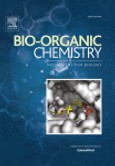
S. E. Hooshmand, A. Ebadati, E. S. Hosseini, A. H. Vahabi, M. Oshaghi, R. Rahighi, Y. Orooji, M. A. M. Jahromi, R. S. Varma, M. R. Hamblin and M. Karimi, "Antibacterial, antibiofilm, anti-inflammatory, and wound healing effects of nanoscale multifunctional cationic alternating copolymers," BIOORGANIC CHEMISTRY, vol. 119, pp. 105550, 2022.
DOI: 10.1016/j.bioorg.2021.105550, IF = 5.307
Abstract: Infectious diseases caused by new or unknown bacteria and viruses, such as anthrax, cholera, tuberculosis and even COVID-19, are a major threat to humanity. Thus, the development of new synthetic compounds with efficient antimicrobial activity is a necessity. Herein, rationally designed novel multifunctional cationic alternating copolymers were directly synthesized through a step-growth polymerization reaction using a bivalent electrophilic cross-linker containing disulfide bonds and a diamine heterocyclic ring. To optimize the activity of these alternating copolymers, several different diamines and cross-linkers were explored to find the highest antibacterial effects. The synthesized nanopolymers not only displayed good to excellent antibacterial activity as judged by minimum inhibitory concentration (MIC) and minimum bactericidal concentration (MBC) against Staphylococcus aureus, Enterococcus faecalis, Pseudomonas aeruginosa, and Escherichia coli, but also reduced the number of biofilm cells even at low concentrations, without killing mammalian cells. Furthermore, in vivo experiments using infected burn wounds in mice demonstrated good antibacterial activity and stimulated wound healing, without causing systemic inflammation. These findings suggest that the multifunctional cationic nanopolymers have potential as a novel antibacterial agent for eradication of multidrug resistant bacterial infections.

D. Iacopini, J. Vančo, S. Di Pietro, V. Bordoni, S. Zacchini, F. Marchetti, Z. Dvořák, T. Malina, L. Biancalana, Z. Trávníček and V. Di Bussolo, "New glycoconjugation strategies for Ruthenium(II) arene complexes via phosphane ligands and assessment of their antiproliferative activity," BIOORGANIC CHEMISTRY, vol. 126, pp. 105901, 2022.
DOI: 10.1016/j.bioorg.2022.105901, IF = 5.307
Abstract: Glycoconjugation is a powerful tool to improve the anticancer activity of metal complexes. Herein, we modified commercial arylphosphanes with carbohydrate-derived fragments for the preparation of novel glycoconjugated ruthenium(II) p-cymene complexes. Specifically, d-galactal and d-allal-derived vinyl epoxides (VEβ and VEα) were coupled with (2-hydroxyphenyl)diphenylphosphane, affording the 2,3-unsaturated glycophosphanes 1β and 1α. Ligand exchange with [Ru(C2O4)(η6-p-cymene)(H2O)] gave the glycoconjugated complexes Ru1β and Ru1α which were subsequently dihydroxylated with OsO4/N-methylmorpholine N-oxide to Ru2β and Ru2α containing O-benzyl d-mannose and d-gulose units respectively. Besides, aminoethyl tetra-O-acetyl-β-d-glucopyranoside was condensed with borane-protected (4-diphenylphosphanyl)benzoic acid by HATU/DIPEA under MW heating, to afford the amide 3∙BH3. Zemplén deacylation with MeONa/MeOH gave the deprotected d-glucopyranoside derivative 4∙BH3. The glycoconjugated phosphane complexes Ru3 and Ru4 were obtained by reaction of the phosphane-boranes 3∙BH3 and 4∙BH3 with [Ru(C2O4)(η6-p-cymene)(H2O)]. The employed synthetic strategies were devised to circumvent unwanted phosphine oxidation. The compounds were purified by silica chromatography, isolated in high yield and purity and characterized by analytical and spectroscopic (IR and multinuclear NMR) techniques. The behaviour of the six glycoconjugated Ru complexes in aqueous solutions was assessed by NMR and MS measurements. All compounds were screened for their in vitro cytotoxicity against A2780/A2780R human ovarian and MCF7 breast cancer cell lines, revealing a significant cytotoxicity for complexes containing the 2,3-unsaturated glycosyl unit (Ru1β, Ru1α). Additional studies on five other human cancer cells, as well as time-dependent toxicity and cell-uptake analyses on ovarian cancer cells, confirmed the prominent activity of these two compounds – higher than cisplatin – and the better performance of the β anomer. However, Ru1β, Ru1α did not show preferential activity against cancer cells with respect to fetal lung fibroblast and human embryonic kidney cells as models of normal cells. The effects of the two ruthenium glycoconjugated compounds in A2780 ovarian cancer cells were further investigated by cell cycle analysis, induction of apoptosis, intracellular ROS production, activation of caspases 3/7 and disruption of mitochondrial membrane potential. The latter is a relevant factor in the mechanism of action of the highly cytotoxic Ru1β, inducing cell death by apoptosis.
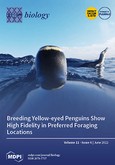
I. Rahimmanesh, M. Boshtam, S. Kouhpayeh, H. Khanahmad, A. Dabiri, S. Ahangarzadeh, Y. Esmaeili, E. Bidram, G. Vaseghi, S. Haghjooy Javanmard, L. Shariati, A. Zarrabi and R. S. Varma, "Gene Editing-Based Technologies for Beta-hemoglobinopathies Treatment," BIOLOGY, vol. 11, iss. 6, pp. 862, 2022.
DOI: 10.3390/biology11060862, IF = 5.168
Abstract: Beta (β)-thalassemia is a group of human inherited abnormalities caused by various molecular defects, which involves a decrease or cessation in the balanced synthesis of the β-globin chains in hemoglobin structure. Traditional treatment for β-thalassemia major is allogeneic bone marrow transplantation (BMT) from a completely matched donor. The limited number of human leukocyte antigen (HLA)-matched donors, long-term use of immunosuppressive regimen and higher risk of immunological complications have limited the application of this therapeutic approach. Furthermore, despite improvements in transfusion practices and chelation treatment, many lingering challenges have encouraged researchers to develop newer therapeutic strategies such as nanomedicine and gene editing. One of the most powerful arms of genetic manipulation is gene editing tools, including transcription activator-like effector nucleases, zinc-finger nucleases, and clustered regularly interspaced short palindromic repeat–Cas-associated nucleases. These tools have concentrated on γ- or β-globin addition, regulating the transcription factors involved in expression of endogenous γ-globin such as KLF1, silencing of γ-globin inhibitors including BCL11A, SOX6, and LRF/ZBTB7A, and gene repair strategies. In this review article, we present a systematic overview of the appliances of gene editing tools for β-thalassemia treatment and paving the way for patients’ therapy.
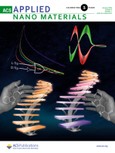
R. Langer, K. Mustonen, A. Markevich, M. Otyepka, T. Susi and P. Błoński, "Graphene Lattices with Embedded Transition-Metal Atoms and Tunable Magnetic Anisotropy Energy: Implications for Spintronic Devices," ACS APPLIED NANO MATERIALS, vol. 5, iss. 1, pp. 1562-1573, 2022.
DOI: 10.1021/acsanm.1c04309, IF = 5.097
Abstract: Doping of the graphene lattice with transition-metal atoms resulting in a high magnetic anisotropy energy (MAE) is an important goal of materials research owing to its potential application in spintronics. In this article, using spin-polarized density functional theory including spin–orbit coupling, we examined the magnetic properties of graphene with vacancy defects, both bare and nitrogen-decorated, and doped by Cr, Mn, and Fe transition-metal single atom (TM-SA) and two different TM atoms simultaneously. The adsorption of a second TM atom on an already embedded TM atom, i.e., the formation of upright TM dimers, was also considered. It is found that the graphene-mediated coupling between TM dopants can significantly increase MAE compared to that of SA impurities. While the MAE of TM-SA did not exceed 2 meV, it was enhanced to −23 meV for Cr and Fe simultaneously embedded into two separated double-vacancy (DV) defects and to a remarkably high value of 119.7 meV for two upright Fe–Mn dimers bound to two separate DVs, considerably exceeding the sum for individual TM-SAs. The latter MAE corresponds to a blocking temperature of 34 K assuming a relaxation time of 10 years. The origin of the enhanced MAE is discussed in relation to the spin excitations at the Fermi level and changes in d-derived states accompanying the rotation of the magnetization between in-plane and out-of-plane directions. We demonstrate that the presence of partially occupied degenerate states at the Fermi level favors its formation. The stability of the systems is also discussed. The computational findings are supplemented by an atomic-resolution characterization of an incidental Mn impurity bonded to four carbon atoms, whose localized spin matches expectations as measured using core-level electron energy-loss spectroscopy. Conducting TM-doped graphene with robust magnetic features offers prospects for the design of graphene-based spintronic devices.

S. M. H. Hejazi, M. Shahrezaei, P. Błoński, M. Allieta, P. M. Sheverdyaeva, P. Moras, Z. Baďura, S. Kalytchuk, E. Mohammadi, R. Zbořil, Š. Kment, M. Otyepka, A. Naldoni and P. Fornasiero, "Defect engineering over anisotropic brookite toward substrate-specific photo-oxidation of alcohols," CHEM CATALYSIS, vol. 2, iss. 5, pp. 1177-1190, 2022.
DOI: 10.1016/j.checat.2022.03.015, CiteScore = 4.0
Abstract: Generally adopted strategies for enhancing the photocatalytic activity are aimed at tuning the visible light response, the exposed crystal facets, and the nanocrystal shape. Here, we present a different approach for designing efficient photocatalysts displaying a substrate-specific reactivity upon defect engineering. The platinized, defective anisotropic brookite TiO2 photocatalysts are tested for alcohol photoreforming showing up to an 11-fold increase in methanol oxidation rate, compared with the pristine one, while presenting much lower ethanol or isopropanol specific oxidation rates. We demonstrate that the substrate-specific alcohol oxidation and hydrogen evolution reactions are tightly related, and when the former is increased, the latter is boosted. The reduced anisotropic brookite shows up to 18-fold higher specific photoactivity with respect to anatase and brookite with isotropic nanocrystals. Advanced in situ characterizations and theoretical investigations reveal that controlled engineering over oxygen vacancies and lattice strain produces large electron polarons hosting the substrate-specific active sites for alcohol photo-oxidation.


